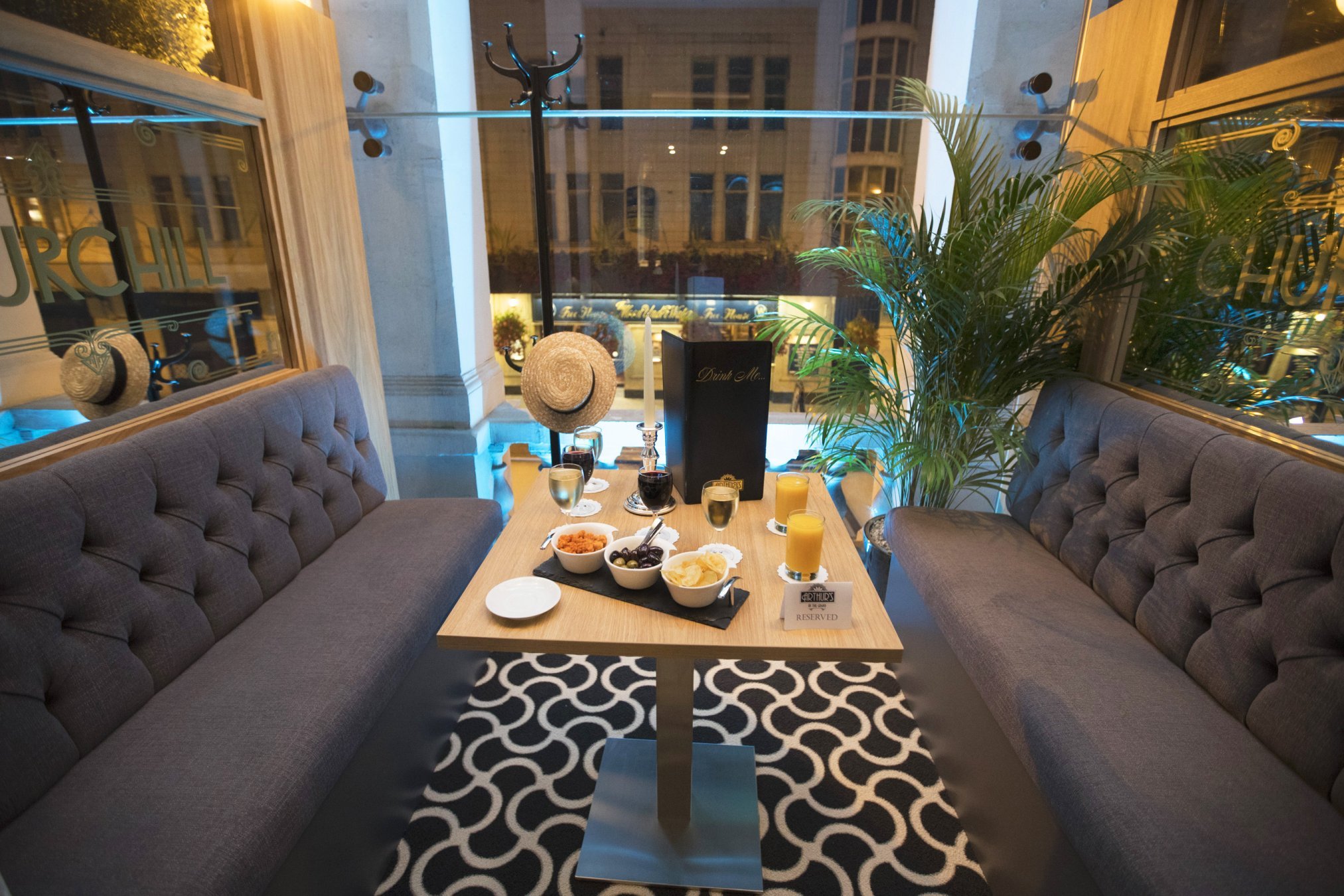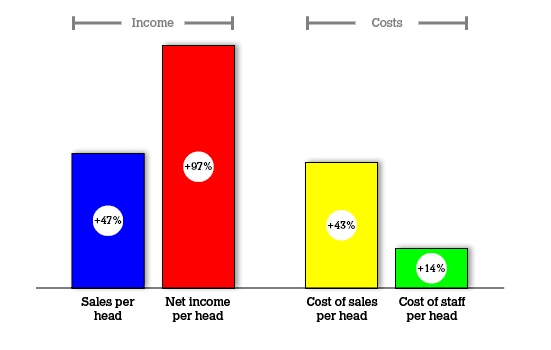
A front-of-house facelift
Wolverhampton’s Grand Theatre is a listed building but its front-of-house areas were in need of a facelift. Adrian Jackson explains how making the theatre more welcoming also made the bars more profitable.
Wolverhampton’s Grand Theatre is a Grade II listed theatre dating from 1894. It is renowned for the intimate atmosphere of its auditorium. Operated as an independent charitable trust since 1982, and until recently receiving an annual local authority grant, it has a tradition of presenting large-scale touring productions as well as an annual pantomime.
The theatre underwent a major refurbishment in 1998, largely funded by grants from the National Lottery and European Regional Development Fund, leaving its original footprint unchanged.
I was convinced that making the facilities less anonymous and more luxurious would have a positive impact on customer experience and behaviour
Theatre restorations at the end of the last century were sensitive to the heart of the building, but this often created a more utilitarian feel in the rest of the venue. The Grand has a beautiful Victorian auditorium, but the front-of-house areas, though well maintained, did not measure up to the rest of the building’s interior. When I arrived in March 2015 I immediately saw an opportunity.
A better experience
I was convinced that making the facilities less anonymous and more luxurious would have a positive impact on customer experience and behaviour, as well as the profile of the theatre. My arrival coincided with a strand of Local Enterprise Partnership funding becoming available through Wolverhampton City Council. By matching this, we suddenly had a real opportunity to change things.
The theatre closed for seven weeks last summer for the complete refurbishment of the public areas, which also included the replacement of all 1,200 seats in the auditorium. The refurbishment would not only aim to give customers a better overall experience, but also create facilities that would be able to stimulate more secondary spend and therefore generate income. I feel that theatres always want more space as part of their plans to increase revenue, but the real achievement is to make best use of the space you already have.
New bars and lounges
In the foyer we replaced a merchandise and confectionery kiosk with a more welcoming foyer bar. The previous stalls bar was adapted to seat more people in luxurious booth-style seating areas, with the flexibility for it to be used as a secondary performance area for more intimate presentations, including comedy and music.
The dress circle level saw the fashioning of a feature bar sponsored by renowned British cutlery manufacturers Arthur Price. Five exclusive booths, each seating up to six people, feature along the dress circle loggia and are available to hire.
The new Utopia Suite and Spotlight Lounge are flexible spaces available for business meetings or functions.
Comparative figures
The results have been extremely positive. Comparing the month of February 2017 with February 2016, we found signifcant growth in sales per head and net income per head, as well as some cost increases reflecting the higher quality products and services being offered.

Booth sales are now contributing 2% of our net front-of-house income and the trend is upwards. Over 35% of the cumulative net profit from the five booths was realised in February alone.
In December we hosted a fine dining experience in an area that was full of schoolchildren attending the pantomime the following week. The décor and ambience don’t affect the children, but twelve months ago they would have precluded the dining.
The investment in facilities has had a secondary impact, prompting additional use of the building for events and meetings. While some of this is small scale for simple room hire, cumulatively it is an additional string to our bow. The fact that customers enter the building for reasons other than a theatre visit actually reinforces our core business.
Improved facilities have enabled us to attract seven new members to our sponsorship scheme, the Business Club, in the first six months after the refurbishment. That already represents a five-figure addition to sponsorship revenues.
Financial investment
What are the downsides? We have had to be patient, allowing the most valuable marketing of all, customer word-of-mouth, to take effect. Also, it was a challenge at first when some of the private hire booths were empty and customers wanted to know why they couldn’t sit in them.
Then there is the level of financial commitment. We were fortunate to be able to undertake wholesale changes, but some of the things we have done are scalable: a function room could be transformed for a relatively low investment, for example.
The partnering of an aesthetic uplift with a product offer to match has been integral. It has not simply been a case of buying cheap and selling high. An increased cost of sale has been part of the strategy of raising the bar to reflect what the theatre is now offering.
While we have committed additional staff to achieving change (dedicated booth hosts for example), and have had to review some of our points of sale, the overall benefits to the bottom line are real – and for visitors to the building, quite tangible. We aimed high and have so far brought customers old and new with us.
We now operate without any subsidy or public money whatsoever. A great result.
Adrian Jackson is Chief Executive and Artistic Director of The Grand Theatre, Wolverhampton.
www.grandtheatre.co.uk
Join the Discussion
You must be logged in to post a comment.